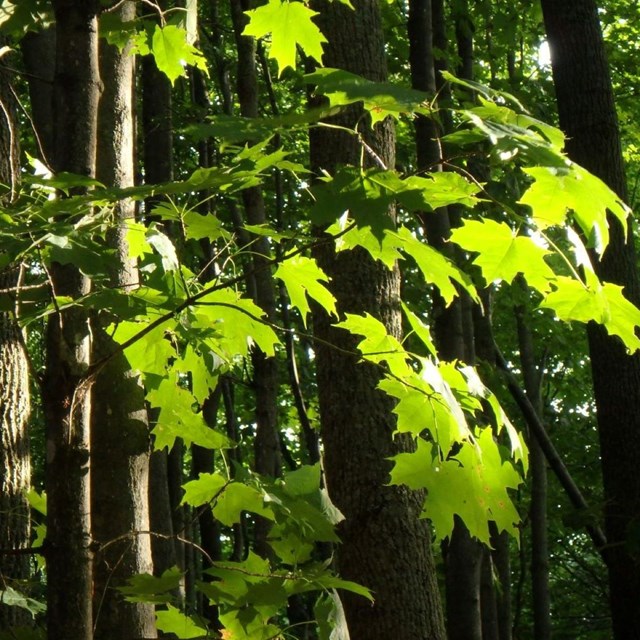“Anishnaabek Aki” (Land of the Anishnaabek)The Anishinaabek have called this area home since time immemorial. These lands provided food, shelter, medicines, and cultural significance for the Anishinaabek for thousands of years.In the 1600s, the relationship the Anishinaabek had with their homelands drastically changed with the arrival of Europeans to the Great Lakes. Diseases, wars, and the efforts to remove the Anishinaabek from Michigan continued for centuries. Despite this, the Anishinaabek fought to remain. One decisive event is the Treaty of Washington, 1836. Leaders from Grand Traverse, along with five other Ottawa/Odawa and Chippewa/Ojibway tribes from Northern Michigan, signed this pivotal agreement to avoid removal west and to retain rights to hunt, fish, and gather. These rights are still being exercised by the Odawa and Ojibway, as well as the tribes still living in their “Anishinaabek Aki.” “Abi Maa Pii” (At Home Here)During the 1800s, the various communities of Ottawa/Odawa in Northern Michigan had to make difficult choices in order to stay in their ancestral homelands. Federal Indian removal policies were meant to move them west of the Mississippi River. The growing number of Euro-American settlers wanted their lands. Diseases were devastating all tribal populations. Yet despite these immense obstacles, the Odawa maintained a place at home here. Several Odawa and Chippewa/Ojibway chiefs made the decision to make Grand Traverse Bay their permanent home in the first half of the 1800s. Among them was the band of Waukazoo. Originally from Waganakising, (Little Traverse Bay) Waukazoo first chose Black Lake, near Holland, Michigan, as his community’s home. When he passed away, his sons, Joseph and Peter, took leadership. Life was hard at Black Lake. Waukazoo’s band suffered great losses from diseases. White settlers began to press for lands. In 1849, Peter Waukazoo and his community decided to return home to the Leelanau Peninsula. On their departure north, they loaded their canoes and boats with their families and goods. In several of these vessels were their ancestors. They reburied their kin immediately upon returning north and establishing their homes. Today, the descendants of Waukazoo’s band and other prominent leaders like Aghosa and Peshaby help make up the Grand Traverse Band of Ottawa and Chippewa Indians.
|
Last updated: November 18, 2025




